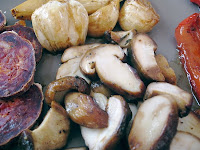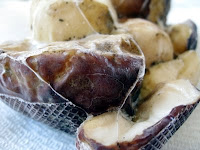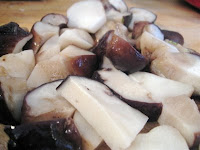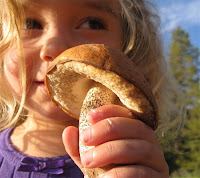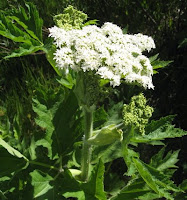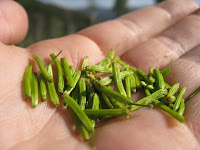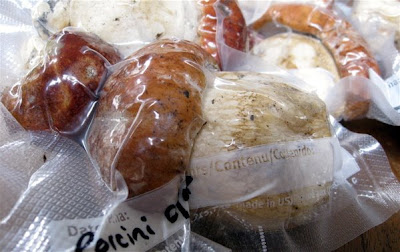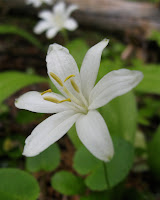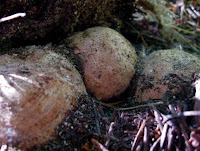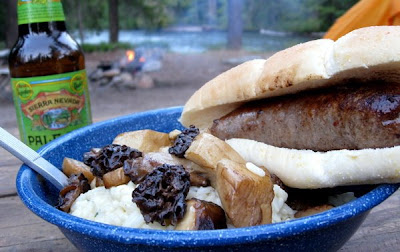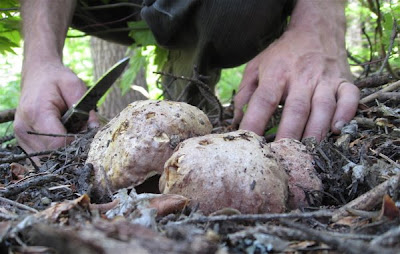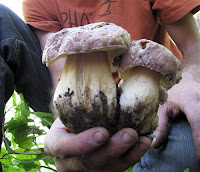 Check out this crazy looking fungus. From a distance it looks like a frozen waterfall. Close up you can see that all those little icicle-like projections are attached to arms, like the tentacles of an undersea creature. This is Hericium abietis, better known as the bear’s head mushroom. Other mushrooms in the Hericium genus include the lion’s mane (Hericium erinaceus) and the bear’s head tooth fungus (Hericium americanum). I usually find the bear’s head in old-growth forests, where it colonizes conifer stumps and logs and can be found fruiting in the same spot for several years. To harvest it, you slice off the appendages with a knife, careful to leave the attached stalk so it will fruit again.
Check out this crazy looking fungus. From a distance it looks like a frozen waterfall. Close up you can see that all those little icicle-like projections are attached to arms, like the tentacles of an undersea creature. This is Hericium abietis, better known as the bear’s head mushroom. Other mushrooms in the Hericium genus include the lion’s mane (Hericium erinaceus) and the bear’s head tooth fungus (Hericium americanum). I usually find the bear’s head in old-growth forests, where it colonizes conifer stumps and logs and can be found fruiting in the same spot for several years. To harvest it, you slice off the appendages with a knife, careful to leave the attached stalk so it will fruit again.
I found this one while hiking in an ancient, moss-draped forest near Mt. Rainier with my friend Cora. On a day filled with edible mushrooms of various species, this one was the most spectacular. To give some perspective, the fungus in the photo above is about 18″ X 18″. Amazingly, we found it right in the middle of a trail where an old log had been cut to open a passage. How many hundreds of hikers and bikers had already brushed past this incredible mushroom without knowing they were rubbing elbows with a true delicacy of the forest? How many didn’t even stop to admire its ornate, even outlandish form? We left some for those who do notice such things.
The bear’s head is best simply sauteed in butter. Cook it longer and more gently (i.e. lower heat) than other mushrooms or it will be chewy. The taste is nutty, complex, a bit like cooked crab, as is the texture. Some mycophagists like to make faux crab cakes with it. Cora sauteed this one with both shallots and garlic and served it with a grilled halibut fillet topped with cherry tomato salsa.








